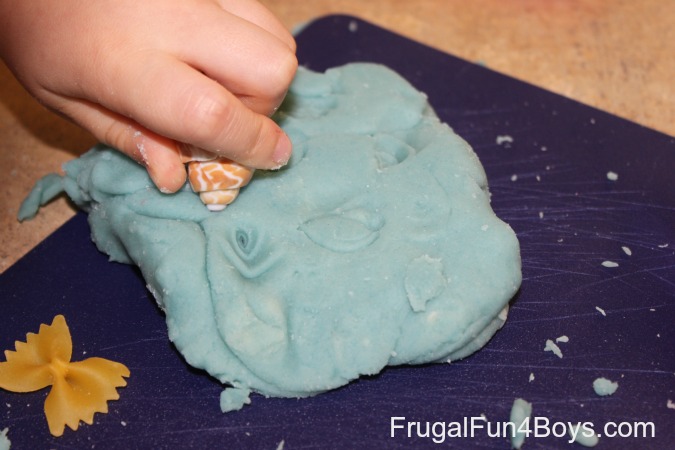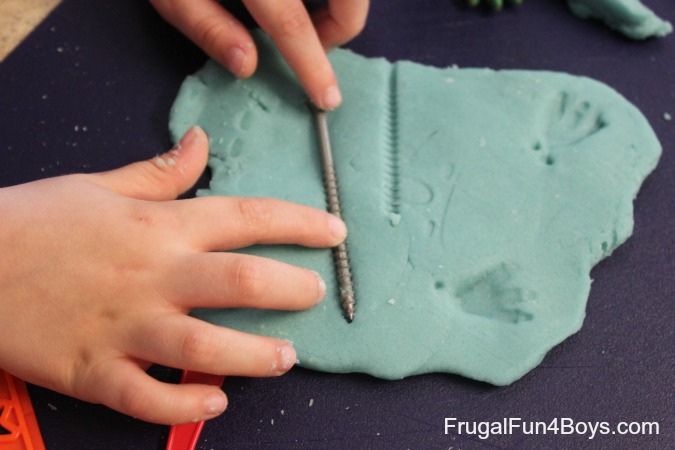Last week, we made some homemade playdough for a science project. (Our favorite recipe is here.) The science project was a total flop – we were trying to capture animal tracks by putting out a tray of playdough with some bait (peanuts) in the middle. Our science book suggested using cement in a throw-away baking pan, but we accidentally bought concrete, and it had way too many stones in it to be able to get a flat surface for animal tracks. So we decided to use playdough. And the critters (probably a raccoon) tore up the playdough and left it all over the ground in little strips. Boo.
Anyway, we had fun using the leftover playdough to make interesting imprints!
We tried sea shells and various pasta shapes:
My personal favorite was the star type pattern that our whisk made.
Owen had fun making dinosaur tracks.
A large screw from our tool stash made an interesting print as well.
What do your kids like to use for making imprints in playdough?






3 Comments
Deborah Sep 25, 2012
I just love this! We are doing playdough prints tomorrow for Dinosaur fossils but this makes me want to do all kinds of playdough prints!!
Lani Sep 26, 2012
Have you tried making prints with other options? What about wet feet on concrete... and wet socks on concrete moving like a snake... and wet caterpillar socks... and wet bird feet made from ?egg carton/card? and wet elephant feet from foam and buckets... and so on?
And do you have woodland paths near you? Can you explore prints in the sand on them and try to work out what sort of feet made that shape and then what sort of animal has those feet?
(I've done similar to these with Scouts and they loved it - great indoor activity in a scout hall on a wood floor.)
My son and I walk most days in the bush (it's coastal plain in reality, but far inland in the West Australian wheatbelt) and check out all the patterns in the sand - the lizards and dog and cat and rabbit tracks etc.
Anne Swan Jul 6, 2013
You might try capturing the animal tracks after they've already visited by pouring plaster of Paris into the track and allowing a short time to dry. You can talk about how it's a reverse print and you can even make a track print by covering the plaster cast with an even coat of vaseline and making the reverse. You can use a paper or plastic cup that you can tear or cut away as a temporary frame for a more even edge.
Post a Comment